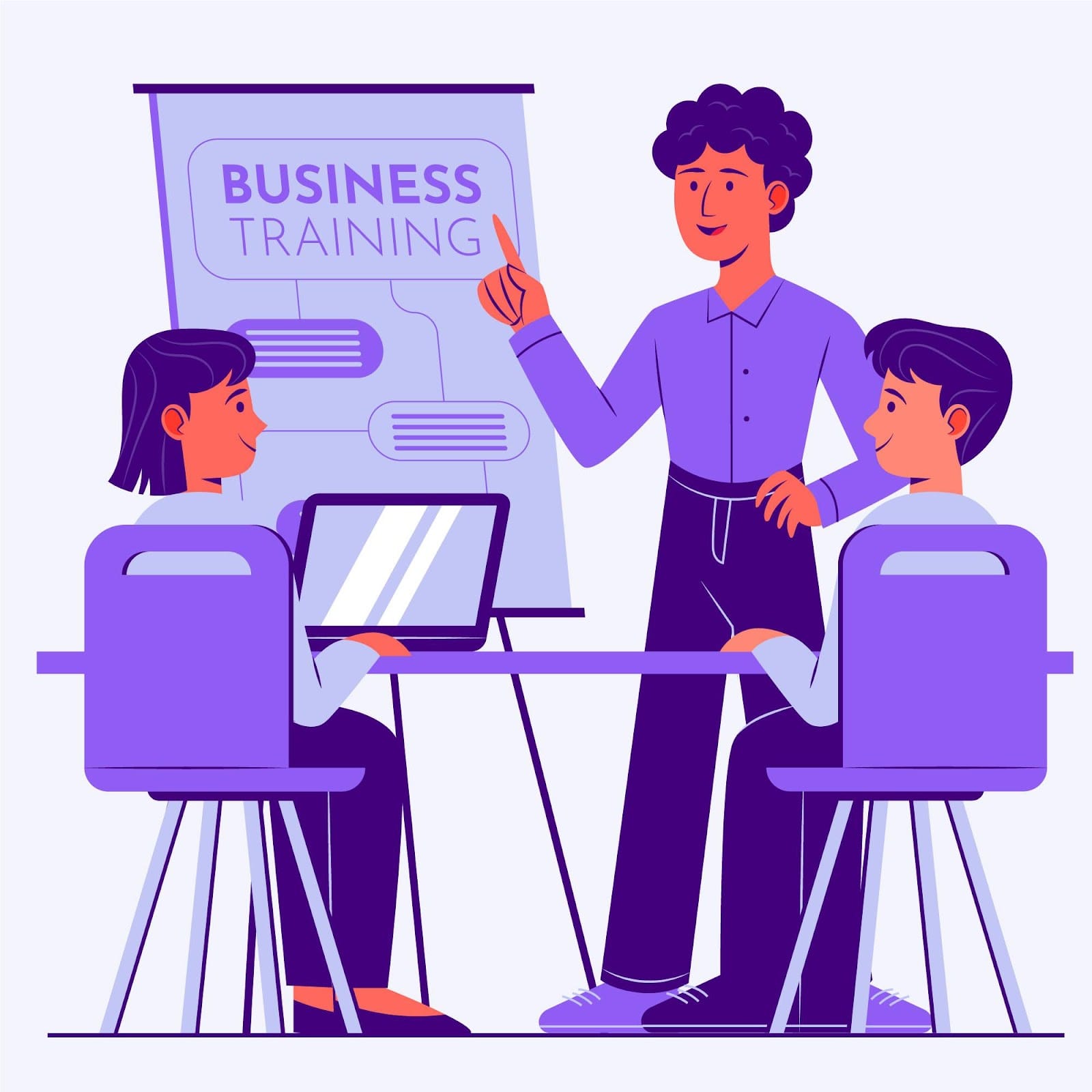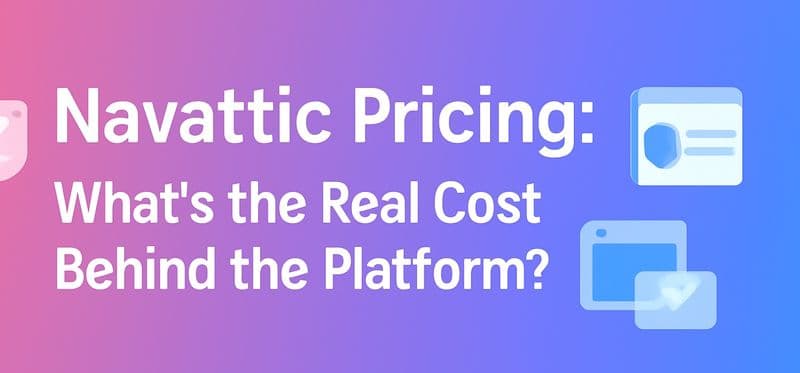Whether you are exploring ways to improve your business's sales performance or are new to sales, you've likely stumbled upon the terms "sales enablement" and "sales training." Despite their prevalence in sales, these concepts are often misunderstood and sometimes used interchangeably. However, while both serve the critical role of empowering a sales force, they have different purposes, benefits, challenges, and activities.
From an organizational perspective, sales enablement focuses on supplying sales professionals with tools, content, and strategies that streamline the sales process. On the other hand, sales training aims to hone specific skills and competencies in sales reps, preparing them to excel in their roles. Understanding the key differences between these two components can help businesses develop a more coherent approach to sales growth.
In this blog, we will dig deeper into these concepts, how they work, and how they complement each other for improved sales outcomes. Let's get started!
What is Sales Enablement?

Sales enablement is a strategic process that equips sales teams with the tools, resources, training, and content they need to engage buyers effectively and close deals efficiently.
It bridges sales and marketing by aligning efforts, providing data-driven insights, and leveraging technology like CRM platforms.
Focused on continuous learning and optimization, sales enablement enhances productivity, streamlines workflows, and fosters personalized, value-driven interactions with potential customers throughout the buyer’s journey.
What is the Purpose of Sales Enablement?
Streamline the Sales Process: Equip sales representatives with the necessary tools and resources to improve efficiency.
Enhance Personalization: Enable reps to deliver tailored and impactful shopping experiences.
Boost Customer Satisfaction and Conversions: Focus on strategies that maximize positive customer outcomes and sales success.
Provide Essential Resources: Offer buyer persona insights, sales call templates, and product guides.
Drive Productivity: Leverage sales tools and strategies that enhance sales team performance.
Promote Continuous Learning: Foster an environment of ongoing development and skill improvement.
Act as a Research and Development Hub: Explore and implement the latest sales strategies, tools, and tactics.
What are the Benefits of Sales Enablement?
Implementing an effective sales enablement strategy brings tangible benefits to an organization. These advantages range from increased sales efficiency and marketing-sales unity to improved sales manager performance. Let's discuss these in detail.
Marketing and sales unity
The role of sales enablement bridges the communication gap between the marketing team and sales teams, leading to unified efforts and coordination directed toward revenue growth. Insights from both departments can collaborate, influencing the creation of critical assets like blog posts and product guides, which sales reps can leverage during customer interactions.
Increase in sales efficiency
Central to sales enablement is optimizing business sales processes. With a well-rounded sales enablement strategy in place, sales reps are ensured the most efficient pathways to achieving their goals. The enhancement of routine tasks means that sales agents have more time to strengthen customer relationships and close deals.
Higher-performing sales managers
By offering the necessary tools and information and relieving traditional managerial responsibilities, sales enablement can boost the performance of sales managers. As a result, managers can pivot their focus to critical aspects like individual coaching and fostering sales skills.
Key Components in Sales Enablement
There are primary elements that define a robust sales enablement framework, which include:
Content Provision: Sales enablement ensures your team has access to the right content, from case studies and whitepapers to product sheets and presentations, at the appropriate time.
Technology and Tools: Implementing user-friendly tools and technology, from CRM systems to automation tools, streamlines the sales process while encouraging productivity.
Cross-functional Alignment: Encourages seamless interdepartmental collaborations between marketing, product development, and customer service teams, ensuring a cohesive approach to the customer journey.
What is Sales Training?

Sales training is a structured process designed to develop the skills, knowledge, and techniques of sales professionals to enhance their performance. It focuses on areas such as product knowledge, effective communication, negotiation tactics, and understanding buyer behavior.
Through workshops, role-playing, and continuous learning, sales training aims to build confidence, improve selling strategies, and equip teams to meet targets while fostering stronger, value-driven customer relationships.
What is the Purpose of Sales Enablement?
Develop Core Selling Skills: Equip sales reps with essential skills like communication, negotiation, and closing techniques.
Enhance Product Knowledge: Ensure sales teams have in-depth knowledge of the products or services they are selling.
Improve Sales Effectiveness: Teach strategies and tactics to increase conversion rates and achieve sales targets.
Boost Confidence: Build confidence in sales reps through practice and role-playing exercises.
Foster Consistency: Standardize sales approaches to ensure a consistent and professional customer experience.
Support Career Development: Provide opportunities for career growth and skill enhancement through ongoing learning.
Align with Business Goals: Align training programs with company objectives to ensure sales strategies are in line with overall business growth.
Adapt to Market Changes: Help sales teams stay updated with new sales techniques, tools, and market trends.
What are the Benefits Offered by Sales Training?
Sales training provides numerous benefits that can positively impact a company's bottom line and overall performance. By investing in sales training, businesses can expect the following benefits:
Boosts revenue
Well-trained salespeople tend to close more deals than those who haven’t received thorough training, ultimately boosting your organization’s revenue.
Improves communication
Sales training is an important communication tool used to impart knowledge about sales enablement processes, company products, and methodologies. They make abstract concepts tangible, which can improve productivity and employee retention.
Solves specific problems
If a problem or process roadblock is impeding your team’s performance, sales training can be an effective solution. Once the problem is pinpointed, a specialized training program can be crafted to equip team members to deal with it effectively.
Continuous Learning
Regular training sessions foster a culture of continuous learning within the sales team, enhancing their skills, confidence, and ability to adapt to changing customer needs.
Key Components of Sales Training
Sales training can involve several key components that collectively contribute towards the development of a holistic and competent sales professional. Here's a breakdown:
Skill Development: Sales training focuses on improving individual skills, including communication, negotiation, time management, and product knowledge.
Performance Improvement: Regular training ensures teams remain current with the evolving sales trends and technologies, thereby boosting overall performance.
Problem-solving: By encouraging active participation and critical thinking, sales training allows professionals to tackle real-time challenges effectively.
Sales Enablement vs Sales Training: The Differences
Are you curious about the differences between sales enablement and sales training? In this section, we will explore how these two key components of a sales strategy differ in their specific duties, benefits, and challenges. Keep reading to understand an in-depth distinction between the two.
Key Focus
One key difference between sales enablement and sales training lies in their overarching focus. Sales enablement, on one hand, is future-facing, primarily focused on refining and improving the efficiency of the sales process. It achieves this through the continual provision of valuable resources, facilitating the strategic application of sales skills according to evolving market trends and customer needs.
On the other hand, sales training hones in on the individual sales rep, imparting domain knowledge and sales tactics. It strives to empower each salesperson with a foundation of understanding of their products, markets, and customers, fostering proficiency and confidence to engage prospects and effectively close deals.
In essence, while sales enablement ensures your sales team has what they need to excel at their roles, sales training zeros in to ensure they know how.
Activities
Sales enablement and sales training entail diverse activities, all aimed at enhancing the overall productivity of the sales team. For sales enablement professionals, tasks range from curating quality lead lists, creating email templates, and providing competitive intelligence to managing CRM systems and utilizing analytics for insights. By removing barriers in the sales process, sales enablers ensure sales teams are equipped with the right tools and information to close more deals.
Sales training activities, on the other hand, aim to educate and coach the sales team to improve their sales skills. This involves conducting training sessions, role-playing exercises, and regular coaching programs. Trainers focus on enhancing the sales reps’ understanding of product knowledge, prospecting techniques, negotiation strategies, and effective communication.
However, the line between these two areas isn't always clear-cut, with some overlap, as both fields aim for the same end goal: to boost sales effectiveness.
Challenges
Both sales enablement and sales training bring their own unique set of challenges. One significant obstacle in sales enablement is the risk of having too many people involved in decision-making or a prolonged chain of command. Balancing demands from different teams and maintaining direct alignment with corporate objectives can also prove challenging.
With sales training, management must carefully balance the need for upskilling against the time taken from sales activities. High-quality sales training programs often require a significant investment, putting financial strain on companies with tight budgets. Also, the quality of the training received is heavily dependent on the trainer's skills, industry experience, and ability to communicate effectively, making the selection of appropriate trainers crucial.
Despite these challenges, the combination of sales enablement and sales training equips sales teams with the necessary knowledge, tools, and resources to excel at their jobs and increase their success rates.
Measurement
Sales enablement and sales training both rely heavily on sales metrics and data to gauge their effectiveness. Yet the specific key performance indicators (KPIs) often differ. Sales enablement usually tracks metrics like sales productivity, content usage, the adoption rate of new technology, and response time to customer inquiries.
Meanwhile, sales training typically uses success metrics such as win rates, customer satisfaction levels, the speed of onboarding for new hires, and feedback from the training sessions. This data is crucial for understanding these initiatives' effectiveness and identifying areas for improvement.
How do Sales Enablement and Sales Training Complement Each Other?
While sales enablement and sales training have unique focuses, they actually work in tandem to enhance the productivity and efficiency of sales teams. Let's discover how:
Addressing Knowledge Gaps
Knowledge gaps in sales can hinder performance, often stemming from insufficient product knowledge, a lack of understanding of the buyer’s journey, or unfamiliarity with the competitive landscape.
Sales training addresses these gaps by providing insights into products, the buying process, and the market. However, sales enablement ensures that this knowledge is applied effectively by providing the right tools, content, and support, reinforcing learning, and helping sales reps utilize their knowledge to drive sales forward.
Enhancing Sales Performance
Both sales training and sales enablement aim to boost sales team performance.
Sales training equips reps with essential skills, such as overcoming objections, closing techniques, and relationship building, while keeping skills fresh through repeated sessions. Sales enablement complements this by ensuring reps have the necessary resources—up-to-date product information, sales scripts, and tools—to apply their skills effectively in real scenarios.
This enhances efficiency, allowing reps to focus on building relationships and closing more deals.
Improving Collaboration
The combination of sales enablement and sales training enhances collaboration within the sales team and with other departments like marketing and product development. Sales training creates a common language and skillset, while sales enablement ensures everyone has access to the same tools and resources.
This synergy improves teamwork, allowing marketing to craft effective messaging and product teams to provide valuable insights, ultimately strengthening the sales force and driving greater effectiveness.
How to Determine the Right Approach for Your Organization?
A one-size-fits-all approach isn’t effective when it comes to sales enablement and sales training. Different organizations have varying needs depending on numerous factors, such as the company's size, the complexity of their sales process, or the specific needs of their reps. Hence, each organization needs to assess their unique requirements and structure to determine how best to integrate and benefit from sales enablement and sales training.
Enterprise Organizations vs Smaller Businesses
For large enterprise organizations with a global salesforce, navigating complex sales processes requires a dedicated sales enablement team. This team implements advanced strategies involving tools, data analytics, and content management, while sales training must be tailored to diverse skill sets across regions.
In contrast, smaller businesses may not need a full enablement team. A small team or individual can manage the function, focusing on the critical needs of a more streamlined salesforce. Sales training is often more specific, targeting core competencies while ensuring scalability as the business grows.
Adapting to New Sales Methodologies
With new sales methodologies constantly emerging, it’s crucial for organizations to stay ahead. Sales enablement and sales training both play key roles in keeping the sales team current and productive.
Sales enablement takes the lead by identifying the most suitable methodologies and ensuring the team has the tools and resources needed for smooth implementation.
At the same time, sales training educates the team on these new techniques, helping them apply them confidently in their interactions. This balanced approach streamlines transitions to new sales methodologies.
Streamline and Scale Your Sales Enablement with SmartCue
In an increasingly competitive sales landscape, leveraging a platform like SmartCue can help streamline and scale your sales enablement efforts. Our innovative solution provides an integrated suite of tools designed to empower your sales team and optimize their efficiency. SmartCue simplifies the sales process and provides customized solutions, ensuring your sales team has the right tools and resources to succeed.
Using SmartCue alongside a strong sales training program can help build an unstoppable sales team to boost your organization's growth. Try our 14-day free trial or contact us for further queries.
Conclusion
Sales enablement and sales training may seem to occupy different realms within an organization. Still, it's their synergy that creates a well-equipped, resilient sales team.
Understanding their unique roles and differences is essential, but coupled together, they provide a comprehensive approach to amplifying your company's sales performance.
After all, success in sales isn't just about having the right tools or possessing exceptional selling skills. It's about creating an environment where both these elements can come together, leading to higher customer satisfaction, stronger client relationships, and, consequently, a significant boost in sales performance and revenue growth.
Frequently Asked Questions
Is sales enablement the same as sales training?
No, sales enablement and sales training are not the same. Sales training focuses on developing specific skills and knowledge, such as product knowledge or sales techniques, to improve individual performance. Sales enablement, on the other hand, involves providing sales teams with the tools, resources, and content needed to sell effectively, aligning sales and marketing efforts to drive overall success. While training is a component of enablement, sales enablement is broader and focuses on continuous support for the sales team.
Does sales enablement include training?
Yes, sales enablement often includes elements of training, particularly in imparting practical knowledge about leveraging tools and resources. However, sales training is a more comprehensive process that focuses on specific sales skills and techniques.
How does sales enablement support sales training?
Sales enablement supports sales training by ensuring that reps have all the resources, tools, and sales training content needed to apply the skills they've learned during training more effectively. This bolsters the efficacy of training by directly enabling the practical application of learned skills.


